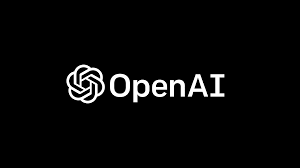ChatGPT and its effects on higher education

The influence of ChatGPT on higher education depends on how and to what extent it’s employed. It may serve as a tool to enhance teaching and learning, but could also hinder students’ motivation and focus. Furthermore, like other AI systems, using ChatGPT for educational purposes raises ethical considerations.
What is ChatGPT and how can it be used?
ChatGPT is a natural language processing (NLP) model that generates human-like text responses using a variant of the popular Transformer network. It’s trained on large amounts of text data, allowing it to understand the patterns of human language and produce convincing text.
ChatGPT is utilized for a variety of purposes, such as chatbots and virtual assistants, providing human-like conversation. Unlike search engines like Google, ChatGPT is a language generation model mostly used to produce text, e.g. conversation responses or descriptions in natural language.
It’s worth mentioning that ChatGPT is not a search engine like Google or Bing. Rather, it is a language generation model that is mostly used to produce text, such as conversation responses or descriptions of images in natural language. In contrast, search engines are tools that allow users to search the Internet by accessing and querying a database of websites.
In what way are ChatGPT different from other natural language processing (NLP) models?
One significant difference between ChatGPT and other NLP models is training. ChatGPT is designed specifically to generate human-like text responses, while other NLP models may be trained on diverse data or for varying objectives, such as sentiment analysis or language translation. Furthermore, other NLP models could use different network architectures, such as RNNs or CNNs, affecting how they process and produce text.
ChatGPT is highly customizable, providing users the ability to fine-tune its responses and behavior, while other NLP models may have limited customization or strict behavior and output.
ChatGPT, a unique and robust NLP model, is ideal for applications requiring conversational interactions and realistic-sounding text. Its flexibility and customization make it a valuable tool for a wide range of applications.
Overall, ChatGPT is a unique and powerful NLP model that is well-suited for applications that require realistic-sounding text generation and conversational interactions. It offers a high degree of flexibility and customization, making it a valuable tool for a wide range of applications.
Pros and cons with ChatGPT for higher education
Some potential pros of using natural language processing (NLP) models in higher education include:
- Improved language understanding: NLP models can help students learn new languages or improve their understanding of existing languages by providing detailed analysis and feedback on grammar, syntax, and vocabulary usage.
- Enhanced writing skills: NLP models can help students improve their writing skills by providing suggestions and feedback on the content, structure, and style of their written work.
- Increased accessibility: NLP models can help make education more accessible to students with disabilities by providing text-to-speech and speech-to-text capabilities, allowing them to access and interact with educational materials in a format that suits their needs
Some potential cons of using NLP models in higher education include:
- Bias and discrimination: NLP models can sometimes reproduce and amplify biases and discrimination present in the data they are trained on, which can lead to unfair or discriminatory outcomes for students.
- Limited flexibility: NLP models are designed to operate within a specific set of parameters, and may not be able to handle complex or unusual situations. This can limit their usefulness in situations that require a high degree of flexibility or creativity.
- Dependence on technology: The use of NLP models in education can create a dependence on technology, which can be problematic in situations where access to technology is limited or unavailable.
Overall, the use of NLP models in higher education can offer many potential benefits, but it is important to carefully consider the potential drawbacks and address them in order to ensure that they are used in an ethical and effective way.
How can students cheat on exams with natural language processing (NLP) models?
Students could potentially cheat on exams with NLP models by using them to generate answers to test questions. For example, a student could input a test question into an NLP model and receive a response that is intended to be the correct answer. The student could then use this response as their own answer on the exam. This could be particularly effective if the NLP model is trained on a large amount of exam-related data and is able to generate responses that are relevant and accurate to the test questions. However, it is important to note that this type of cheating would be difficult to detect and prevent, and would likely require strict monitoring and oversight to prevent it from happening.
Some potential methods for cheating with NLP models include:
- Generating answers to exam questions: Students could use NLP models to generate answers to exam questions based on the knowledge and information contained in the model’s training data.
- Copying text from other sources: Students could use NLP models to automatically copy text from other sources, such as textbooks or online resources, and include it in their exam responses.
Copying and pasting text from a textbook and adding a prompt to ChatGTP to rewrite it can potentially result in a unique text that would not be detected by plagiarism checkers. Additionally, you can ask ChatGTP to write the text in a more natural and human-like way, which could further decrease the chances of it being identified as machine-generated text. - Collaborating with other students: Students could use NLP models to collaborate with each other during an exam, by sharing answers or providing each other with hints or suggestions
How do you prevent or mitigate the risk of cheating?
To prevent or mitigate the risk of cheating with NLP models, several measures can be taken. For example, exams could be designed in a way that makes it difficult or impossible for NLP models to generate relevant and accurate responses. This could involve using open-ended questions or scenario-based questions that require students to apply their knowledge and critical thinking skills in order to provide a correct answer. Additionally, exams could be carefully monitored and supervised to detect and prevent any potential cheating. This could involve using proctoring software or other technologies to monitor students during the exam, as well as implementing strict policies and procedures for preventing and addressing cheating. Overall, preventing and mitigating the risk of cheating with NLP models will require a combination of careful exam design, monitoring, and oversight.
- Providing clear guidelines and expectations for exam conduct: Educators can provide students with clear guidelines and expectations for exam conduct, and explicitly prohibit the use of NLP models or other technology for cheating.
- Monitoring exams closely: Educators can monitor exams closely, either in person or using technology, to ensure that students are not using NLP models or other technology to cheat.
- Using exam questions and formats that are difficult to cheat on: Educators can use exam questions and formats that are difficult to cheat on, such as open-ended or essay-style questions, or exams that require students to demonstrate their knowledge and understanding through practical tasks or experiments
Overall, the use of NLP models for cheating on exams is a potential risk, but one that can be mitigated with careful planning and attention to detail
Copyright issues related to ChatGPT
It is important to be aware of copyright issues when using ChatGPT or any other language model. Copyright law protects original works of authorship, such as literary, dramatic, musical, and artistic works, from being used without the permission of the copyright holder. This means that if you use any content in your interaction with ChatGPT that is protected by copyright, you may be infringing on the rights of the copyright holder.
The results generated by ChatGPT are not necessarily free to use. As with any other content, the results generated by ChatGPT may be protected by copyright law. This means that you may need to obtain permission from the copyright holder before using the results generated by ChatGPT in any way.
It is also worth noting that ChatGPT is a large language model trained by OpenAI, and as such, it is not intended to be used for any commercial purposes. Using the results generated by ChatGPT for commercial purposes may be a violation of OpenAI’s terms of service, and it is important to be aware of this when using ChatGPT.
Avoiding copyright infringement with ChatGP
In order to avoid infringing on the rights of copyright holders, it is important to only use content in your interactions with ChatGPT that you have the right to use. This can include content that you have created yourself, content that is in the public domain, or content that is licensed for use under a Creative Commons license or other license that allows for the use of the content.
If you are unsure about whether a particular piece of content is protected by copyright or whether you have the right to use it in your interactions with ChatGPT, it is always best to err on the side of caution and seek permission from the copyright holder. This will help to ensure that you are not infringing on anyone’s rights and can help to avoid any potential legal issues.
In general, it is a good idea to be cautious when using the results generated by ChatGPT or any other language model. If you are unsure about whether you have the right to use the results generated by ChatGPT, it is always best to seek permission from the copyright holder or to use content that is in the public domain or licensed for use under a Creative Commons license or other license that allows for the use of the content.
Did you write this text by your own or did you use ChatGPT?
ChatGTP has been a huge help in generating the text for this blog post. However, I’ve found that I can guide the AI’s output in the direction I want by using prompts or questions that are carefully crafted. It’s worth noting that generating a blog post using ChatGTP typically involves adding content section by section, as the AI model cannot produce an entire post in one go.
Although AI language models can certainly make the content creation process more efficient, it’s still essential to review and edit the text they generate. This ensures that the output is accurate, coherent, and consistent with the intended message. It’s also important not to rely exclusively on AI-generated content but rather use it as a starting point and combine it with your own expertise and creativity. By doing so, you can produce compelling content that engages your readers and reflects your unique style and perspective.
Read more
Do you have something that you want to add to this list, please make a comment to my post and I add a link to it.
If you want to read more about this, I recommend:
AI är redan studentens bästa vän
Chattrobotarna är inte kunskapens fiende
How ChatGPT Kicked Off an A.I. Arms Race (Kevin Roose, New York Times, Feb. 3, 2023)
Practical Responses to ChatGPT and Curated Resources
Risk för fusk – AI kan skriva akademiska uppsatser
The Most Important Job Skill of This Century: Your work future could depend on how well you can talk to AI. by Charley Warzel, The Atlantic, Feb. 8, 2023
Universities adjust to ChatGPT, but the ‘real AI’ lies ahead by Jan Petter Myklebust University World News, 04 March 2023
Anders Isaksson, PhD
Associate Professor
CHALMERS UNIVERSITY OF TECHNOLOGY
More about me:
Anders Isaksson – Google Scholar
When referencing to this post you can use the following format: Isaksson, A. (2022) ChatGPT and its effects on higher education. Retrieved YYYY-MM-DD from https://www.andersexcel.se/chatgpt/




Pingback: Practical Responses to ChatGPT and Curated Resources – Albright's Digital Learning & Innovation Blog